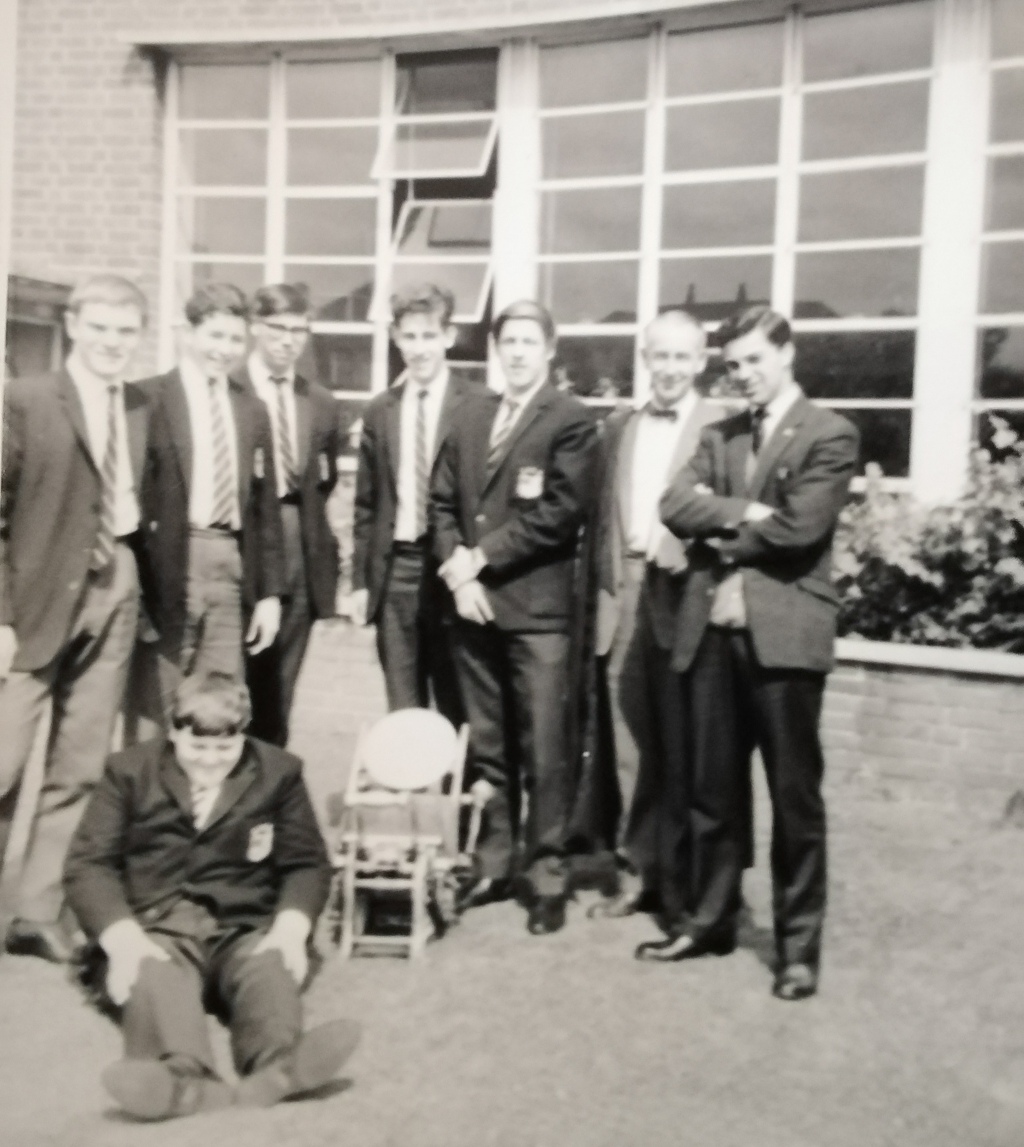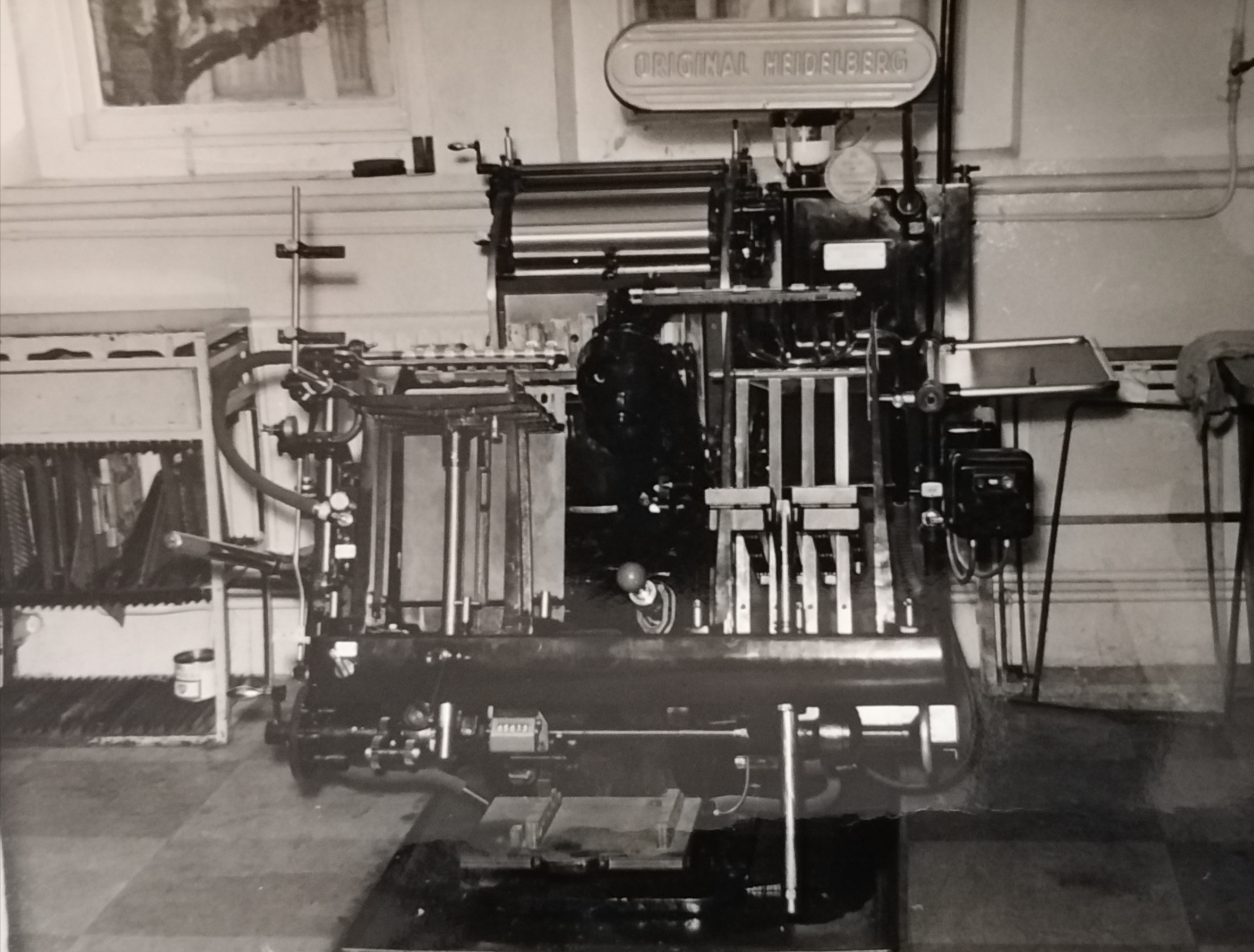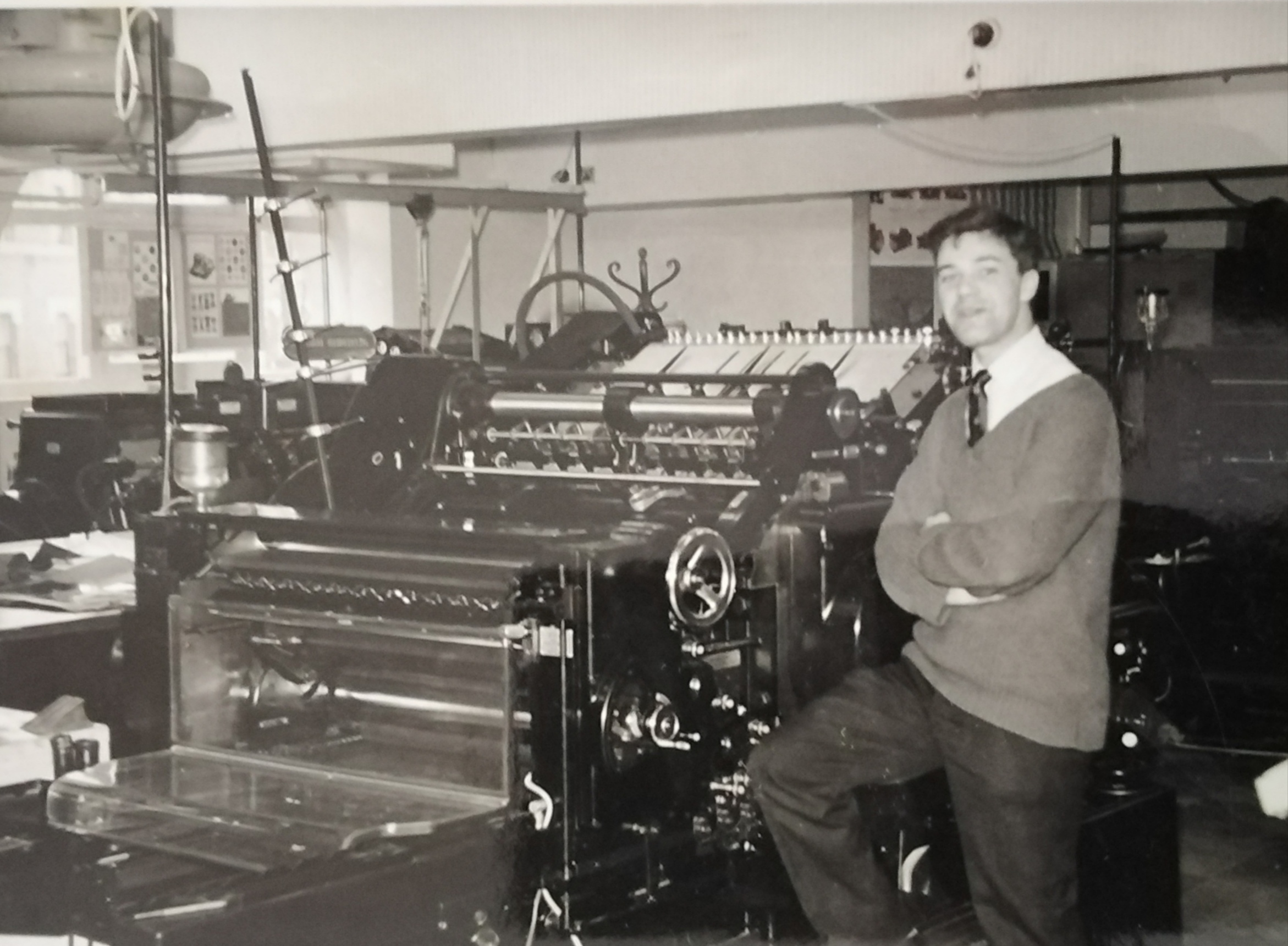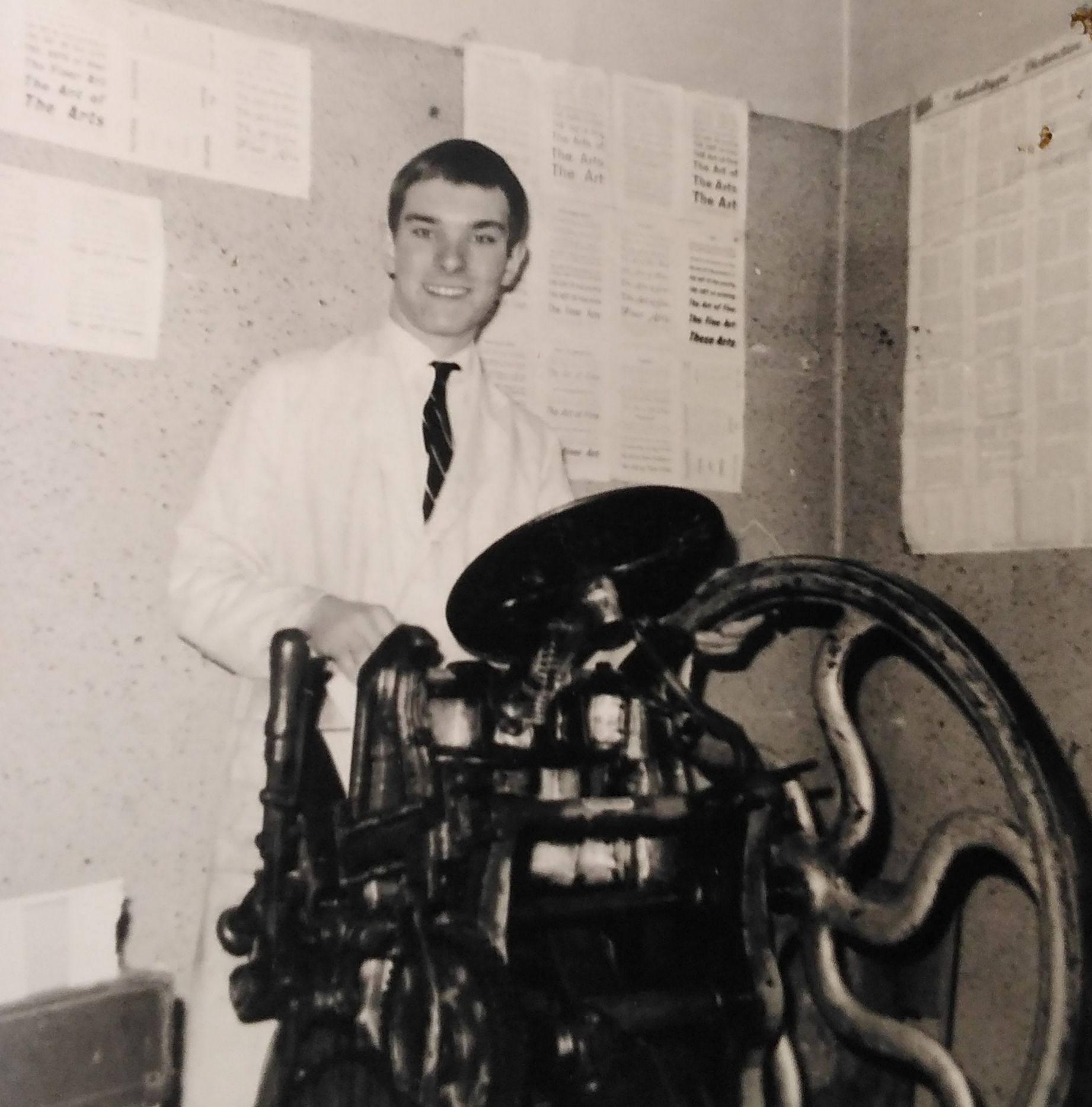Clocktower Press
In March 2020 Paul Chapman sent me details of the Clocktower Press which was set up in 1966 by Paul and his friend David Rees. This was an initiative by Paul and David with the help of Peter Jolly, one of the Staff. Originally they used an old hand platten press, then a treddle press before a firm in London, Heidleberg Press, donated one of their automatic machines to the School. The picures below illustrate a little of the set ups.


